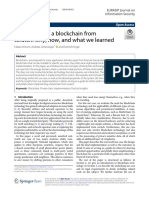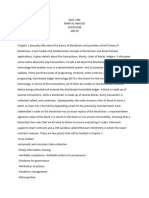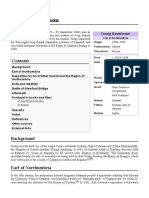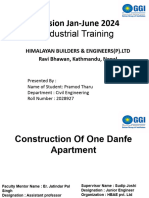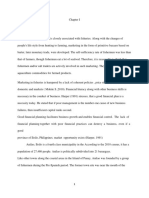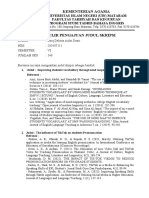0% found this document useful (0 votes)
42 views11 pagesBlockchain Manufacturing Network
FabRec is a prototype for a decentralized peer-to-peer network of manufacturing nodes that utilizes blockchain technology to manage manufacturing information. It allows manufacturers to connect and share verified capabilities and machine assets, ensuring accountability through automated updates and traceable event logs. The system is designed to facilitate connections between companies and small to medium-sized manufacturers, enhancing trust and efficiency in the manufacturing process.
Uploaded by
Supriya HegdeCopyright
© © All Rights Reserved
We take content rights seriously. If you suspect this is your content, claim it here.
Available Formats
Download as ZIP, PDF, TXT or read online on Scribd
0% found this document useful (0 votes)
42 views11 pagesBlockchain Manufacturing Network
FabRec is a prototype for a decentralized peer-to-peer network of manufacturing nodes that utilizes blockchain technology to manage manufacturing information. It allows manufacturers to connect and share verified capabilities and machine assets, ensuring accountability through automated updates and traceable event logs. The system is designed to facilitate connections between companies and small to medium-sized manufacturers, enhancing trust and efficiency in the manufacturing process.
Uploaded by
Supriya HegdeCopyright
© © All Rights Reserved
We take content rights seriously. If you suspect this is your content, claim it here.
Available Formats
Download as ZIP, PDF, TXT or read online on Scribd
/ 11
















